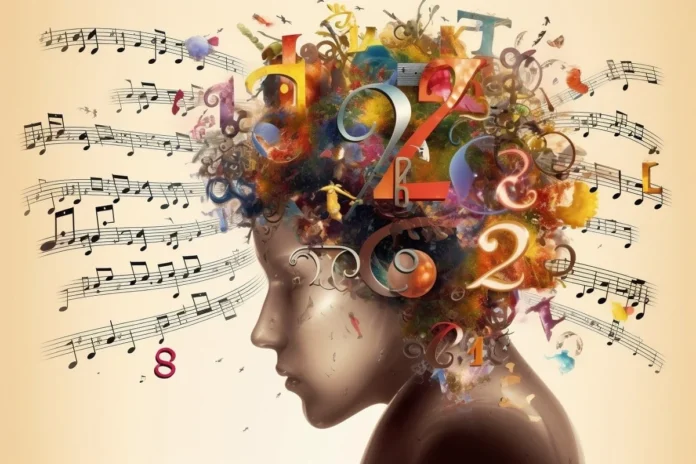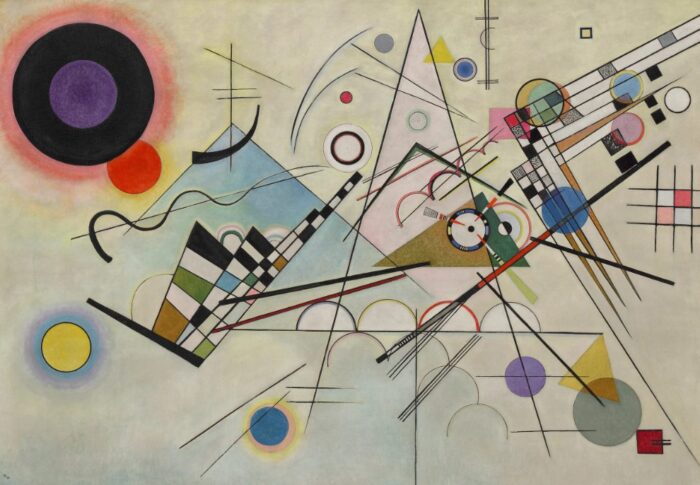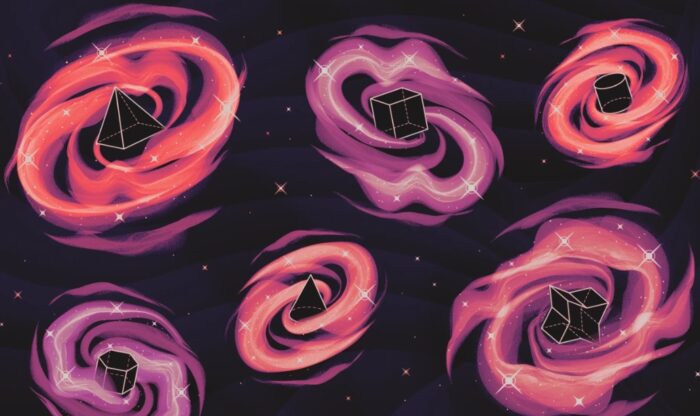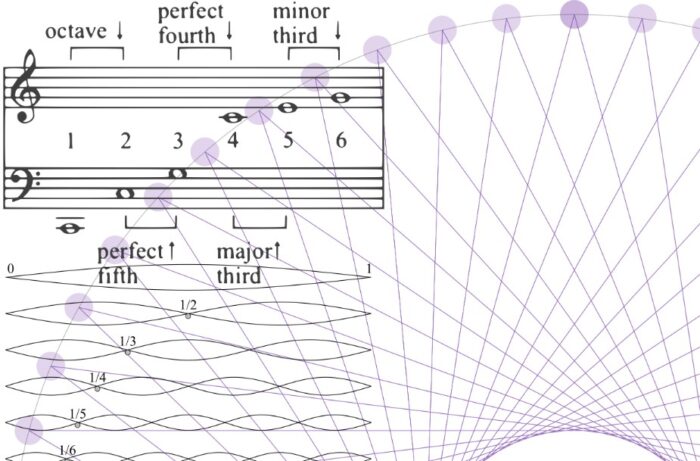
When most people think of mathematics, they imagine numbers, equations, and logical reasoning. Rarely does one instinctively link it to the emotive strokes of a painter’s brush or the soul-stirring notes of a musical composition.
Yet, beneath the surface of many artistic masterpieces and melodious tunes, lies the heart of mathematics, beating rhythmically and creating patterns that please not only our logical minds but also our aesthetic senses. The confluence of mathematics with art and music is as ancient as civilization itself, with artists and musicians often employing mathematical principles to enhance their creations, sometimes even subconsciously.
This intertwining of disciplines showcases humanity’s innate desire to find order in chaos, symmetry in randomness, and patterns in the abstract. As we embark on this journey of exploration, we will uncover the mathematical principles that have been the unsung heroes of many artistic and musical marvels.
From the Golden Ratio’s influence on iconic art pieces to the mathematical ratios that form the bedrock of our favorite tunes, we are about to delve deep into the harmonious world where numbers meet aesthetics. Let’s unveil the artistry of numbers and the precision of creativity.
If you’re in search of the best online maths course or are simply intrigued by the connection between mathematics, art, and music, this exploration of the harmonious interplay of numbers and aesthetics is your guide.
Thesis Statement
This article aims to unveil the profound influence of mathematical concepts on visual art and music, showcasing how mathematics enriches the creative process and enhances the beauty of human expression.
Exploring Mathematical Concepts in Visual Art

Golden Ratio
Often referred to as nature’s number, the Golden Ratio is a fascinating blend of art and mathematics. Deriving from the well-known Fibonacci sequence, this proportion has consistently guided artists and architects across history. This ratio, approximately equal to 1.618, offers an inherent sense of balance and beauty.
When applied, it leads to the creation of visually stunning masterpieces. From the pyramids of Egypt to the paintings of Leonardo da Vinci, the Golden Ratio’s influence is undeniable, showcasing how mathematical precision can elevate the aesthetic appeal of artworks and architectural designs.
Fractal Geometry
A realm where simplicity breeds complexity, fractal geometry introduces us to repeating patterns that can be observed at every scale. This concept is not just limited to theoretical mathematics; its presence is predominant in art forms as well.
These self-similar patterns, whether found in a Mandelbrot set or in the twirl of a galaxy, have intrigued and inspired artists for decades. Their never-ending intricacies tell a tale of infinity, echoing the vastness of the universe and the limitless possibilities of imagination.
The Intersection of Geometry and Artistic Design

Euclidean Geometry
Originating from the ancient works of the mathematician Euclid, Euclidean geometry has provided artists with tools and principles to bring depth and dimension to their works. This geometry, grounded in flat surfaces, encompasses the concepts of lines, angles, and shapes. By harnessing its principles, artists have been able to capture the essence of the world around them, converting three-dimensional realities into two-dimensional portrayals with accuracy and elegance.
Non-Euclidean Geometry
Stepping outside the realm of flat surfaces, non-Euclidean geometry opens a world of curves and unconventional spaces. This unique approach to spatial understanding has given modern artists an entirely new canvas to experiment upon. From the curvatures in a Salvador Dali painting to the intriguing perspectives in modern sculptures, this geometry has expanded the boundaries of artistic expression, allowing creators to view and depict the world through a different lens.
The Role of Mathematical Proportion in Sculpture
Sculpture, as a three-dimensional art form, offers a unique perspective on the interplay between mathematics and art. The use of mathematical proportions in sculpture is not merely about achieving physical balance to prevent toppling over; it is about creating visual harmony and conveying intended messages or emotions through spatial relationships. Sculptors, from ancient Greeks to contemporary artists, have relied on mathematical proportions to bring their visions to life in a tangible form.
Incorporating Sacred Geometry in Sculptural Art
Notably, the application of sacred geometry art elevates this practice to a spiritual level. This ancient technique, recognizing symbolic and sacred significance in specific geometric shapes and proportions, intertwines closely with the crafting of sculptures that are visually and spiritually engaging. Through sacred geometry, artists bridge physical form with metaphysical concepts, embedding their creations with deep layers of meaning.
The meticulous commitment to mathematical proportions, seen in techniques like Polyclitus’ “Canon” which targets ideal human proportions, is enriched by the inclusion of sacred geometry art. Artists intentionally use geometric patterns and shapes believed to reflect a profound universal order, such as the Fibonacci sequence’s spiral or the Möbius strip’s continuous loop, symbolizing continuity and interconnectedness.
Like their ancient Greek forebears, modern sculptors employ these sacred geometric principles to build sculptures that harmonize form and space while resonating spiritually with observers. The representation of fractal patterns that mirror nature’s complexity or the employment of symmetry and ratios that signify cosmic balance makes these sculptures more than mere objects; they serve as contemplative pieces, fostering a sense of unity with the cosmos.
Fibonacci Sequence and its Influence on Art
Immersed in the natural world around us, the Fibonacci sequence is more than just a series of numbers. It’s a pattern of growth and development. In art, it manifests in the spirals of shells, the arrangement of petals, and the branching of trees. Artists, captivated by this sequence, have incorporated its rhythm and progression into their works, showcasing the innate mathematical elegance present in nature’s creations.
Mathematical Symmetry and Aesthetics

Symmetry in Art
Symmetry, an attribute that denotes balance, has always been a cornerstone of artistic creation. When incorporated into art, symmetrical patterns evoke feelings of harmony, order, and tranquility. They offer the viewer a sense of predictability, grounding the piece in a structured reality. Through mirrored images, balanced structures, and equal distribution, artists employ symmetry to enhance the visual allure of their works.
Tessellations
A testament to the wonders of mathematical symmetry, tessellations are captivating patterns formed by the repetition of a single shape, filling a plane without any gaps or overlaps. These patterns, found in historical artworks and modern designs alike, are a visual treat. They exemplify how mathematical principles can be aesthetically woven into the fabric of art and design.
Music as Mathematical Patterns and Ratios

Musical Scales and Ratios
Music, at its core, is an expression of mathematics. The musical scales, forming the backbone of melodies and harmonies, are built on specific mathematical ratios. These ratios determine the intervals between notes, giving each scale its unique sound. By understanding these mathematical foundations, musicians have crafted tunes that resonate with our emotions and create sonic landscapes that transport us to different realms.
Rhythmic Patterns
Beyond melody lies the domain of rhythm, where mathematical patterns play an essential role. These patterns dictate the tempo, the beat, and the progression of a musical piece. From the basic 4/4 time signature to complex polyrhythms, the use of mathematical structures ensures that music has depth, layering, and intricacy. Through these patterns, musicians create a temporal journey, guiding listeners through highs and lows, pauses, and crescendos.
Harmonic Series and Musical Intervals

Dive into the harmonic series and its role in defining musical intervals, revealing the mathematical precision behind the emotive power of music.
Conclusion
Mathematics is not confined to the realms of equations and formulas; it is an integral part of the human creative spirit. Whether it’s the elegant proportions of a Renaissance masterpiece, the intricate patterns of fractal artwork, or the emotive power of a musical composition, mathematics enhances our appreciation of art and music.
Visit MyEdSpace.co.uk to explore the cross-disciplinary inspirations and creativity that arise when mathematics meets the world of aesthetics. Unlock new dimensions of beauty and meaning in the arts and music through the lens of mathematics.








